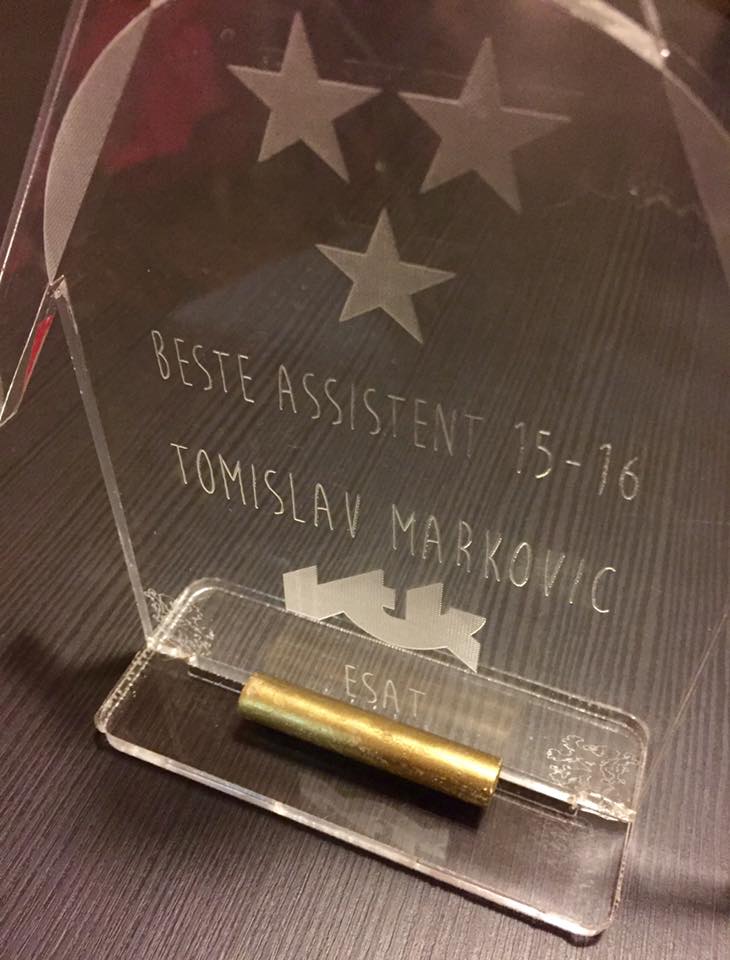 Mladi Križevčanin s adresom u gradu Leuven u Belgiji, Tomislav Marković, održat će u ponedjeljak, 19. prosinca 2016. godine, u 12:15 sati na Fakultetu elektrotehnike i računarstva Sveučilišta u Zagrebu gostujuće predavanje pod naslovom “Dizajn mikrovalnih sustava za kontrolu temperature u različitim mikrofluidskim platformama” (Design of microwave heaters for various microfluidcs platforms) u okviru FER-ovog seminara o visokim tehnologijama. Predavanje organizira Hrvatska sekcija IEEE, Odjel za elektroničke elemente / poluvodičke integrirane sklopove te Odjel za teoriju i primjenu mikrovalova (MTT).
Mladi Križevčanin s adresom u gradu Leuven u Belgiji, Tomislav Marković, održat će u ponedjeljak, 19. prosinca 2016. godine, u 12:15 sati na Fakultetu elektrotehnike i računarstva Sveučilišta u Zagrebu gostujuće predavanje pod naslovom “Dizajn mikrovalnih sustava za kontrolu temperature u različitim mikrofluidskim platformama” (Design of microwave heaters for various microfluidcs platforms) u okviru FER-ovog seminara o visokim tehnologijama. Predavanje organizira Hrvatska sekcija IEEE, Odjel za elektroničke elemente / poluvodičke integrirane sklopove te Odjel za teoriju i primjenu mikrovalova (MTT).
 Tomislav Marković je završio preddiplomski i diplomski studij na Fakultetu elektrotehnike i računarstva Sveučilišta u Zagrebu, u području elektronike i informacijske tehnologije pod mentorstvom profesora Adrijana Barića 2013. godine. Tomislav je trenutno na poslijediplomskom studiju na Sveučilištu u Leuvenu, Belgija, gdje pod mentorstvom profesora Barta Nauwelaersa i Ilje Ocketa radi u području mikrovalnih istraživanja u molekularnoj biologiji.
Tomislav Marković je završio preddiplomski i diplomski studij na Fakultetu elektrotehnike i računarstva Sveučilišta u Zagrebu, u području elektronike i informacijske tehnologije pod mentorstvom profesora Adrijana Barića 2013. godine. Tomislav je trenutno na poslijediplomskom studiju na Sveučilištu u Leuvenu, Belgija, gdje pod mentorstvom profesora Barta Nauwelaersa i Ilje Ocketa radi u području mikrovalnih istraživanja u molekularnoj biologiji.
 Sadržaj predavanja (na engleskom jeziku): This talk is about development of integrated microwave or millimeter wave based heating systems for total analysis systems (μTAS), which are miniaturised microfluidic lab-on-a-chip devices that perform several laboratory functions on a single device. In total analysis systems (μTAS) accurate and fast temperature cycling is an important issue. Temperature control in μTAS typically employs Peltier elements or resistive heaters, which are limited by the thermal conductivity between the sample and the heating element. Other disadvantages of these heating methods include their limited heating gradient and the required close proximity between heater and fluid. The use of microwaves or millimeter waves circumvents these issues. It has the potential to operate in a non-contacting and spatially selective manner, (dissipation only occurs in the fluid sample). If the material between the fluid and the microwave heating structure has low losses (e.g. glass), very little power will be dissipated there. Using microwaves also has the benefit of being suitable for integration into existing technology platforms, without adding much processing complexity. Although this can be seen as a “closed” research question, the issue of controlling for temperature effects is also important in microwave and millimeter wave sensing devices. In addition, work on the EM-thermal interaction leads to novel ideas for microfluidic actuation.
Sadržaj predavanja (na engleskom jeziku): This talk is about development of integrated microwave or millimeter wave based heating systems for total analysis systems (μTAS), which are miniaturised microfluidic lab-on-a-chip devices that perform several laboratory functions on a single device. In total analysis systems (μTAS) accurate and fast temperature cycling is an important issue. Temperature control in μTAS typically employs Peltier elements or resistive heaters, which are limited by the thermal conductivity between the sample and the heating element. Other disadvantages of these heating methods include their limited heating gradient and the required close proximity between heater and fluid. The use of microwaves or millimeter waves circumvents these issues. It has the potential to operate in a non-contacting and spatially selective manner, (dissipation only occurs in the fluid sample). If the material between the fluid and the microwave heating structure has low losses (e.g. glass), very little power will be dissipated there. Using microwaves also has the benefit of being suitable for integration into existing technology platforms, without adding much processing complexity. Although this can be seen as a “closed” research question, the issue of controlling for temperature effects is also important in microwave and millimeter wave sensing devices. In addition, work on the EM-thermal interaction leads to novel ideas for microfluidic actuation.


Komentari su zatvoreni.